Welcome to our free classical music site

Do you write about classical music? Are you a blogger? Want to team up with Classical Connect? Send us a message, let's talk!

Do you write about classical music? Are you a blogger? Want to team up with Classical Connect? Send us a message, let's talk!
June 6, 2017. The Cliburn update. The semifinal results were announced last night and both Daniel Hsu and Georgy Tchaidze made it into the final round. Congratulations to both! In the final round they will perform a piano quintet (Daniel will play Franck’s Piano Quintet and Georgy – Dvořák’s Quintet op. 81) and then a concerto. Daniel will play Tchaykovsky’s no. 1, while Georgy will perform Prokofiev’s Piano concerto no. 3. Good luck and break a leg!
June 5, 2017. The Cliburn and the IMF. The 2017 Van Cliburn International Piano Competition is entering its final round: the six finalists will be announced later today. Every lover of classical music in this country is aware of the Cliburn, the premier piano competition organized by the late Van Cliburn in 1962, four years after he won the first Tchaikovsky competition in Moscow. Many of the Cliburn winner and even participants who didn’t get top prizes went on to develop great careers: Nikolai Petrov, Radu Lupu, Rudolf Buchbinder, Cristina Oriz, Vladimir Viardo, Barry Douglas, Olga Kern, Aleksey Sultanov, to name just a few. While the Cliburn is known worldwide, the International Music Foundation, a Chicago organization that presents high-quality music performances by emerging artists and supports music education in the area, isn’t well known even in its home city. And yet, Chicagoans can listen live to some of the best young pianists who are today performing in Fort Worth: the flagship program of the IMF is the Dame Myra Hess Memorial Concerts, and many of its “alumni” went on to participate in and win major music competitions. This year, three such musicians, Daniel Hsu, Georgy Tchaidze and Rachel Kudo played at the Cliburn. All three made it to the quarterfinals, while Hsu and Tchaidze went a step further, to the semifinals. Today we’ll find out if they make it into the final round. The 19-year-old Daniel Hsu is a native of San-Francisco. At the age of 10 he was accepted to the Curtis Institute of Music where he studied with Garry Graffman and Eleanor Sokoloff. He was named a Gilmore Young Artist in 2016 and a year later played a concert at Carnegie Hall. In the preliminary round of the Cliburn, Daniel
by the late Van Cliburn in 1962, four years after he won the first Tchaikovsky competition in Moscow. Many of the Cliburn winner and even participants who didn’t get top prizes went on to develop great careers: Nikolai Petrov, Radu Lupu, Rudolf Buchbinder, Cristina Oriz, Vladimir Viardo, Barry Douglas, Olga Kern, Aleksey Sultanov, to name just a few. While the Cliburn is known worldwide, the International Music Foundation, a Chicago organization that presents high-quality music performances by emerging artists and supports music education in the area, isn’t well known even in its home city. And yet, Chicagoans can listen live to some of the best young pianists who are today performing in Fort Worth: the flagship program of the IMF is the Dame Myra Hess Memorial Concerts, and many of its “alumni” went on to participate in and win major music competitions. This year, three such musicians, Daniel Hsu, Georgy Tchaidze and Rachel Kudo played at the Cliburn. All three made it to the quarterfinals, while Hsu and Tchaidze went a step further, to the semifinals. Today we’ll find out if they make it into the final round. The 19-year-old Daniel Hsu is a native of San-Francisco. At the age of 10 he was accepted to the Curtis Institute of Music where he studied with Garry Graffman and Eleanor Sokoloff. He was named a Gilmore Young Artist in 2016 and a year later played a concert at Carnegie Hall. In the preliminary round of the Cliburn, Daniel  played Beethoven’s 31st piano sonata. Earlier this year, he played the same sonata at the Dame Myra Hess concert; you can listen to it here. In the quarterfinals, he played Bach’s Chaconne from the violin Partita in d minor, BWV 1004, arranged for the piano by Ferruccio Busoni. You can listen to it in a live recording, here.
played Beethoven’s 31st piano sonata. Earlier this year, he played the same sonata at the Dame Myra Hess concert; you can listen to it here. In the quarterfinals, he played Bach’s Chaconne from the violin Partita in d minor, BWV 1004, arranged for the piano by Ferruccio Busoni. You can listen to it in a live recording, here.
Georgy Tchaidze was born in Saint Petersburg and studied at the Moscow Conservatory with Sergey Dorensky. He then moved to Berlin where he continued his studies with Klaus Hellwig at the Berlin University of the Arts. Georgy is a winner of several international competitions and performed across Europe, North America and China. Here he’s collaborating with the German-Korean violinist Clara-Jumi Kang in Johannes Brahms’s Sonata No. 1 for Violin and Piano, Op. 78 in G Major.
Rachel Kudo was born in Washington DC. She attended the Juilliard and currently works with Leon Fleisher. She also studied with Joseph Kalichstein, Richard Goode, and Gilbert Kalish. Like Daniel Hsu, Ms. Kudo is a winner of the Gilmore Young Artist Award and a two-time winner of the Gina Bachauer International Piano Competition. It so happens that we have her recording of Johannes Brahms’s Sonata No. 2 for Violin and Piano in A Major, Op. 100, which she performed with the violinist Siwoo Kim. It’s a fine compliment to Brahms’s first violin sonata. You can listen to Violin Sonata no. 2 here.
Robert Schumann was born this week, on June 8th of 1810. We’ll celebrate him another time.Permalink
May 29, 2017. A different Les Six. No less than six noted composers were born this week. None of them arrived at the pinnacle of their profession, but all six are very interesting in one way or another. Chronologically, the composers are: Georg Muffat, Marin Marais, Mikhail Glinka,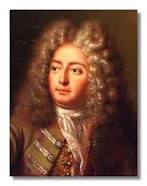 Edward Elgar, Isaac Albéniz and Erich Wolfgang Korngold. Muffat and Marais were born just three years apart: Muffat on June 1st of 1653 and Marais – on May 31st of 1656. They even had the same teacher, Jean-Baptiste Lully. In all other respects, their lives and their music were very different. Muffat, of Scottish and French descent, led a peripatetic life. Born in the Duchy of Savoy, he studied in Paris, then worked in Alsace before settling in Vienna. From there he traveled to Prague and, eventually, Salzburg. There he worked for the archbishop, as Mozart would 100 years later. After a ten year stay in Salzburg he went to Rome where he met Arcangelo Corelli and many other famous musicians of the day. He returned to Salzburg two years later but didn’t stay long. He moved to Augsburg, Bavaria, and later – to Passau, where he lived the remaining years of his life. He died in Passau, 50 years of age, on February 23rd of 1704. Marais, on the other hand, was born in Paris and died in Paris. He went to the choir school of St Germain-l'Auxerrois, one of the best music schools in Paris. He studied the viol with several teachers, one of whom was the famous player Sainte-Colombe (it’s said that Marais surpassed him after six months of study). He was invited to play at the orchestra of the Opera, where Lully was the music director. As composer, he wrote mostly for his instrument, the viol, eventually writing five books of Pièces de viole. Some of his pieces were performed in Versailles and were well received. He became a conductor of the opera around 1706 (the official title of the conductor was “batteur de mesure” – the one who beats the measure; that was the extent of conducting in the early 18th century, and that’s also what lead to Lully’s demise, when he hit his foot with the conducting staff and died of the gangrene several days later). Here is Marais, Le Labyrinthe, from Suitte d'un gout etranger, which in turn is from Book IV of PiècesDe Viole. Jordi Savall and friends are performing. As for Muffat, we’ll hear a piece from the second set of suites which Muffat gave the Latin name of Florilegium (“Selection”). He wrote two sets, Florilegium Primum and Florilegium Secundum, each set consisting of several suites of dances. Here is the second suite from Florilegium Secundum subtitled Laeta Poesis. You may hear some Lully in it, but it also anticipates Handel. The Academy of Ancient Music is conducted by Christopher Hogwood.
Edward Elgar, Isaac Albéniz and Erich Wolfgang Korngold. Muffat and Marais were born just three years apart: Muffat on June 1st of 1653 and Marais – on May 31st of 1656. They even had the same teacher, Jean-Baptiste Lully. In all other respects, their lives and their music were very different. Muffat, of Scottish and French descent, led a peripatetic life. Born in the Duchy of Savoy, he studied in Paris, then worked in Alsace before settling in Vienna. From there he traveled to Prague and, eventually, Salzburg. There he worked for the archbishop, as Mozart would 100 years later. After a ten year stay in Salzburg he went to Rome where he met Arcangelo Corelli and many other famous musicians of the day. He returned to Salzburg two years later but didn’t stay long. He moved to Augsburg, Bavaria, and later – to Passau, where he lived the remaining years of his life. He died in Passau, 50 years of age, on February 23rd of 1704. Marais, on the other hand, was born in Paris and died in Paris. He went to the choir school of St Germain-l'Auxerrois, one of the best music schools in Paris. He studied the viol with several teachers, one of whom was the famous player Sainte-Colombe (it’s said that Marais surpassed him after six months of study). He was invited to play at the orchestra of the Opera, where Lully was the music director. As composer, he wrote mostly for his instrument, the viol, eventually writing five books of Pièces de viole. Some of his pieces were performed in Versailles and were well received. He became a conductor of the opera around 1706 (the official title of the conductor was “batteur de mesure” – the one who beats the measure; that was the extent of conducting in the early 18th century, and that’s also what lead to Lully’s demise, when he hit his foot with the conducting staff and died of the gangrene several days later). Here is Marais, Le Labyrinthe, from Suitte d'un gout etranger, which in turn is from Book IV of PiècesDe Viole. Jordi Savall and friends are performing. As for Muffat, we’ll hear a piece from the second set of suites which Muffat gave the Latin name of Florilegium (“Selection”). He wrote two sets, Florilegium Primum and Florilegium Secundum, each set consisting of several suites of dances. Here is the second suite from Florilegium Secundum subtitled Laeta Poesis. You may hear some Lully in it, but it also anticipates Handel. The Academy of Ancient Music is conducted by Christopher Hogwood.
Mikhail Glinka, born a century and a half later, on June 1st of 1804, occupies a special place in the history of Russian music. It’s not very often that we can identify the “first composer,” but that’s really what he was - the first authentically Russian composer. Of course, there were Russians composing secular music well before Glinka, Bortniansky and Berezovsky among them, but those, while quite gifted, mostly repeated the patterns of their Italian teachers. Glinka’s music, on the other hand, was original, he went to the Russian sources and created a melodic world that affected generations of composers to come, from the Mighty Five who followed him to Tchaikovsky and the more conservative Soviet composers of the 20th century. Here’s one of his better-known pieces, the Overture to the opera Ruslan and Lyudmila. Evgeny Mravinsky conducts the Leningrad Philharmonic Orchestra.
Edward Elgar and Isaac Albeniz were also born three years apart, Elgar on June 2nd of 1857, Albeniz – on May 29th of 1860. Both became “national composers,” Elgar almost officially, with his Pomp and Circumstance Marches being played at state events, Albeniz – purely by virtue of his music. Both deserve proper treatment, hopefully soon. And so does Erich Wolfgang Korngold, a child prodigy whose career never reached promised heights.Permalink
May 22, 2017. Wagner and Francaix. Richard Wagner was born on this day in 1813. For some years we’ve been following Wagner’s life by the milestones of his operas; last year we arrived at the end of the “Romantic operas” period, with Lohengrin, written in 1848 and its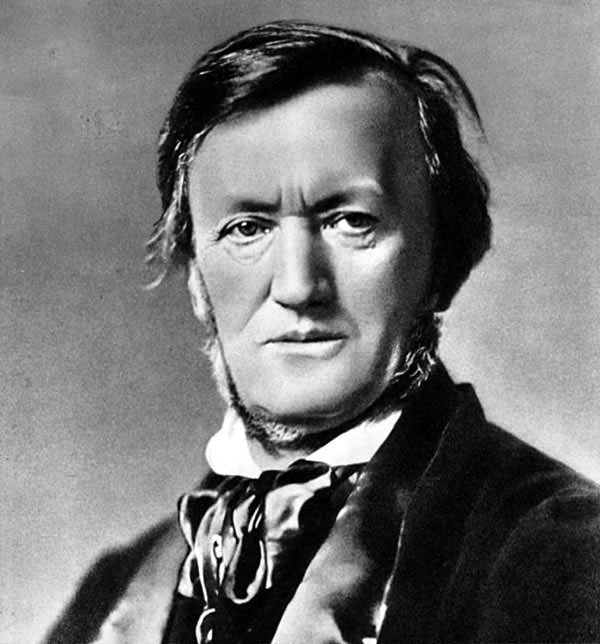 premier in 1850, being the last one. Wagner’s genius had matured, and during the next several years he would produce not simply “operas” but “music dramas,” the term Wagner himself used to describe what he considered to be a “total work of art,” art that combines music and theater into one unified whole. He started working on Der Ring des Nibelungen (The Ring of the Nibelung) in 1848 and continued for almost 26 years, completing the composition of the last (fourth) opera of the cycle, Götterdämmerung (Twilight of the Gods) in 1874. During that period, he also wrote two other masterpieces, Tristan und Isolde and Die Meistersinger von Nürnberg. Wagner intended the Ring to be performed as a cycle, as it was at the premier, in the course of several days in August of 1876 in Bayreuth. The premier took place in a specially built theater, the old opera house being too small for Wagner’s orchestra. Wagner’s old patron, King Ludwig II of Bavaria, even though his relationship with Wagner had soured throughout the years, was instrumental in financing the theater. The premier was attended by royalty (Kaiser Wilhelm was there, as well as Ludwig, and Don Pedro, the Emperor of Brazil). The leading musicians of the day were also present: Anton Bruckner, Edvard Grieg, Tchaikovsky, and of course Franz Liszt, Wagner’s father in law. And so was the philosopher Friedrich Nietzsche, one of the major influences and, for a while, a good friend.
premier in 1850, being the last one. Wagner’s genius had matured, and during the next several years he would produce not simply “operas” but “music dramas,” the term Wagner himself used to describe what he considered to be a “total work of art,” art that combines music and theater into one unified whole. He started working on Der Ring des Nibelungen (The Ring of the Nibelung) in 1848 and continued for almost 26 years, completing the composition of the last (fourth) opera of the cycle, Götterdämmerung (Twilight of the Gods) in 1874. During that period, he also wrote two other masterpieces, Tristan und Isolde and Die Meistersinger von Nürnberg. Wagner intended the Ring to be performed as a cycle, as it was at the premier, in the course of several days in August of 1876 in Bayreuth. The premier took place in a specially built theater, the old opera house being too small for Wagner’s orchestra. Wagner’s old patron, King Ludwig II of Bavaria, even though his relationship with Wagner had soured throughout the years, was instrumental in financing the theater. The premier was attended by royalty (Kaiser Wilhelm was there, as well as Ludwig, and Don Pedro, the Emperor of Brazil). The leading musicians of the day were also present: Anton Bruckner, Edvard Grieg, Tchaikovsky, and of course Franz Liszt, Wagner’s father in law. And so was the philosopher Friedrich Nietzsche, one of the major influences and, for a while, a good friend.
We’ll tackle individual operas of the Ring – Das Rheingold (The Rhinegold), Die Walküre (The Valkyrie), Siegfried and Götterdämmerung – in due course: each one represents a challenging, exasperating, but in the end enormously satisfying, subject. For now, we’ll just play the overture, or the Prelude, as Wagner called it, to Das Rheingold – that’s how the monumental tetralogy starts, the beginning of all beginnings (Sir Georg Solti conducts the Vienna Philharmonic in a 1967 recording).
A very different artist was also born this week, the French composer Jean Françaix. Born 99 years and a day after Wagner, Françaix may be considered Wagner’s opposite. Françaix once said that his goal is to "give pleasure": you would’ve never heard anything similar from Wagner. Françaix was born into a musical family which encouraged his studies. He was still a child when Ravel noticed him and wrote a glowing letter to his father, Alfred, the director of the Le Mans Conservatoire. Françaix studied with Nadia Boulanger who later became his champion, playing and conducting many of his premiers. His work was met enthusiastically. Not very complicated, it had a natural charm and brilliance. In addition to orchestral and ensemble music, Françaix wrote music for ballets (in collaboration with the great choreographer Roland Petit) and a number of film scores. He wrote several operas; La princesse de Clèves (1964) was very well received. Here’s his Concertino for piano and orchestra, from 1932. The pianist is Claude Françaix, Jean’s daughter.Permalink
May 15, 2017. Monteverdi at 450. Claudio Monteverdi, a pioneering figure and one of the most important composers in the history of European music, was baptized on this day in 1567, making it Monteverdi’s 450th anniversary. For the past two years, we’ve celebrated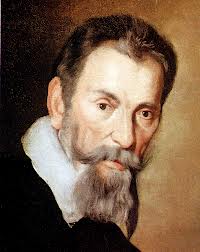 the genius of Monteverdi with detailed entries (here and here). While Monteverdi is rightly famous as one of the very first composers of opera and the most significant one among the early adopters of this new genre, the bulk of his musical output was in madrigals. He published his first book of madrigals in 1587, when he was twenty years old and still living in Cremona, his place of birth. The last four, Books 6 through 9, were published when Monteverdi was in Venice, having left Mantua in 1612. (The last, ninth book, appeared in print posthumously). As an example, here’s a madrigal from his first book, Baci soavi e cari (it’s performed by The Consort of Musicke with the soprano Emma Kirkby, Anthony Rooley conducting). It’s nice but rather conventional. Considering that both Palestrina (d. 1594) and Orlando di Lasso, who died the same year, were still alive and writing great music, and that Gesualdo was at the peak of his creative power, this is not a very memorable achievement. Compare it, for example, with Orlando’s amazing Carmina crhomatico from Prophetiae Sibyllarum, composed years earlier (here; Ensemble De Labyrintho is conducted by Walter Testolin). Monteverdi’s later motets are very different. Consider, for example, the second motet, Hor che 'l ciel e la terra (Now that the sky, earth and wind are silent, after a sonnet by Petrarch) from Book 8 (here, with Concerto Italiano directed by Rinaldo Alessandrini). It’s operatic in style, with dramatic scenes following serene episodes. Monteverdi himself called it Stile concitato (agitated style) and it certainly is.
the genius of Monteverdi with detailed entries (here and here). While Monteverdi is rightly famous as one of the very first composers of opera and the most significant one among the early adopters of this new genre, the bulk of his musical output was in madrigals. He published his first book of madrigals in 1587, when he was twenty years old and still living in Cremona, his place of birth. The last four, Books 6 through 9, were published when Monteverdi was in Venice, having left Mantua in 1612. (The last, ninth book, appeared in print posthumously). As an example, here’s a madrigal from his first book, Baci soavi e cari (it’s performed by The Consort of Musicke with the soprano Emma Kirkby, Anthony Rooley conducting). It’s nice but rather conventional. Considering that both Palestrina (d. 1594) and Orlando di Lasso, who died the same year, were still alive and writing great music, and that Gesualdo was at the peak of his creative power, this is not a very memorable achievement. Compare it, for example, with Orlando’s amazing Carmina crhomatico from Prophetiae Sibyllarum, composed years earlier (here; Ensemble De Labyrintho is conducted by Walter Testolin). Monteverdi’s later motets are very different. Consider, for example, the second motet, Hor che 'l ciel e la terra (Now that the sky, earth and wind are silent, after a sonnet by Petrarch) from Book 8 (here, with Concerto Italiano directed by Rinaldo Alessandrini). It’s operatic in style, with dramatic scenes following serene episodes. Monteverdi himself called it Stile concitato (agitated style) and it certainly is.
Book 8 was published in 1638 but some of the works in it were composed earlier. The set consists of two parts: Madrigals of War (Hor che 'l ciel is one of them) and Madrigals of Love. The war may refer to the terrible events of 1530 during and following the War of Mantuan Succession. Even though Monteverdi was living in Venice, he was considered a citizen of Mantua and was receiving a pension from the Duchy, so these events affected him more than most. Monteverdi left Mantua after the death of the Duke Vincenzo I Gonzaga, in 1612. The sons of Vincenzo, Francesco, who fired Monteverdi, and Ferdinando, died without leaving a male heir. That led to a conflict between the claimants to the duchy, mainly the Holy Roman Empire and France. In July of 1630 the imperial troupes sacked Mantua. That was only part of the tragedy: the invading army also brought the plague. Some of the escaping Mantuans went to Venice and infected that city as well. In the following year, out of Venice’s population of 150,000 almost 50,000 people died. Asking for protection from the Virgin, the city erected the church of Santa Maria della Salute, now part of the Venetian cityscape; music of Monteverdi was played at the foundation ceremony. Whether thru divine intervention or natural causes, by November of 1631 the plague was over. Monteverdi’s mass with the famous Gloria was performed during the celebrations. Rather than playing the excerpts from the Mass, here is one of the Madrigals of Love from Book 8: a lovely Lamento della Ninfa (The Consort of Musicke is conducted by Anthony Rooley).
In April of 1632 Monteverdi entered the priesthood; even so, he continued to write secular music, operas among them. The last one, L’incoronazione di Poppea, was premiered during the Carnival season in 1643. Monteverdi died several months later, on November 29th of that year.Permalink
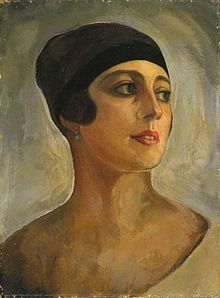 Vera de Bosset brought Lourié and Stravinsky together; she, apparently, was also the reason they fell apart. While in Paris, Lourié continued composing, writing two symphonies and many songs on poetry from Sappho and Dante to Pushkin, Verlaine and Mayakovsky. In 1941 the Germans occupied France and with the help of Serge Koussevitzky Lourié fled to the US. He tried to write music for film, but was not very successfull. His major undertaking was the opera The Blackamoor of Peter the Great, after Pushkin’s novel, which has not been staged to this day. Lourié died in Princeton in 1966.
Vera de Bosset brought Lourié and Stravinsky together; she, apparently, was also the reason they fell apart. While in Paris, Lourié continued composing, writing two symphonies and many songs on poetry from Sappho and Dante to Pushkin, Verlaine and Mayakovsky. In 1941 the Germans occupied France and with the help of Serge Koussevitzky Lourié fled to the US. He tried to write music for film, but was not very successfull. His major undertaking was the opera The Blackamoor of Peter the Great, after Pushkin’s novel, which has not been staged to this day. Lourié died in Princeton in 1966.
May 8, 2017. A fascinating life of a little-known composer. A Russian-French-American composer, an early Futurist, Arthur Lourié was born on May 14th of 1891 in a small town of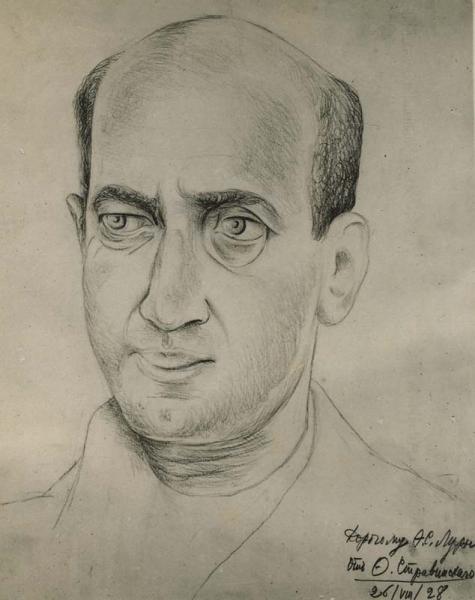 Propoisk, now in Belarus. Half of the population of the town was Jewish, as was Arthur’s family, though they were reasonably well off as his father was an engineer. In 1899 they moved to Odessa. In 1909 Arthur moved to St-Petersburg and entered the Conservatory where he studied composition with Alexander Glazunov (he never completed his studies and was mostly self-taught). In 1914 Arthur converted to Catholicism and took the name of Arthur-Vincent Lourié, after his favorite painter, Vincent Van Gogh. As part of the artistic elite, he became friends with the poet Anna Akhmatova and was the first to set her verse to music. He also was an acquaintance of the poets Vladimir Mayakovsky and Alexander Blok, and the writer Fyodor Sologub. In 1914, following Marinetti’s example, Lourié, the painter Georgy Yakulov and the poet Benedikt Livshitz published the Russian version of the Futurist Manifesto, “We and the West.” A year later he composed a “futurist” piece called Forms in the Air, which he dedicated to Picasso (you can listen to it here in the performance by the Italian pianist and composer Daniele Lombardi). Extremely innovating, he also wrote several atonal and quarter-tone pieces, in some ways presaging Schoenberg.
Propoisk, now in Belarus. Half of the population of the town was Jewish, as was Arthur’s family, though they were reasonably well off as his father was an engineer. In 1899 they moved to Odessa. In 1909 Arthur moved to St-Petersburg and entered the Conservatory where he studied composition with Alexander Glazunov (he never completed his studies and was mostly self-taught). In 1914 Arthur converted to Catholicism and took the name of Arthur-Vincent Lourié, after his favorite painter, Vincent Van Gogh. As part of the artistic elite, he became friends with the poet Anna Akhmatova and was the first to set her verse to music. He also was an acquaintance of the poets Vladimir Mayakovsky and Alexander Blok, and the writer Fyodor Sologub. In 1914, following Marinetti’s example, Lourié, the painter Georgy Yakulov and the poet Benedikt Livshitz published the Russian version of the Futurist Manifesto, “We and the West.” A year later he composed a “futurist” piece called Forms in the Air, which he dedicated to Picasso (you can listen to it here in the performance by the Italian pianist and composer Daniele Lombardi). Extremely innovating, he also wrote several atonal and quarter-tone pieces, in some ways presaging Schoenberg.
After the October Revolution of 1917, Lourié served in the Department of Education under Anatoly Lunacharsky. For all practical purposes, Lunacharsky, who in the early years after the Revolution supported all kinds of radical artistic innovations, was functioning as Minister of Culture. Lourié was his deputy in charge of music. In Moscow Lourié shared an apartment with Sergei Sudeikin and his wife, Vera de Bosset. Sudeikin was an exceptional painter who became well-known in Paris for his decorations to Diagilev’s ballets. Vera de Bosset, a dancer, would play a very important role in Lourié’s life: in 1920 she and Sudeikin moved to Paris where she met and soon become a lover of (and much later the wife of) Igor Stravinsky. Vera would eventually introduce Lourié to Stravinsky which started a long, if contentious, friendship. Lourié’s work at the Soviet ministry didn’t last long, and in 1921 he moved to Berlin where he befriended Ferruccio Busoni and Edgar Varèse. A year later, in 1922, he moved to Paris, and through Vera met up with Stravinsky. He became one of Stravinsky’s most important supporters, writing articles and speaking on his behalf. There is no doubt that of the two it was Stravinsky who possessed an enormous creative talent but many musicologists point out that Lourié’s compositions may have influenced Stravinsky’s work: for example, Lourié’s A Little Chamber Music (here) was written in 1924, and it sounds stylistically very similar to Stravinsky’s Apollon musagète, which was written three years later, in 1927.
The portrait of Lourié, above, is by Theodore Stravinsky, Igor’s son from his first marriage. The portrait of Vera de Bosset is by Sergei Sudeikin.Permalink